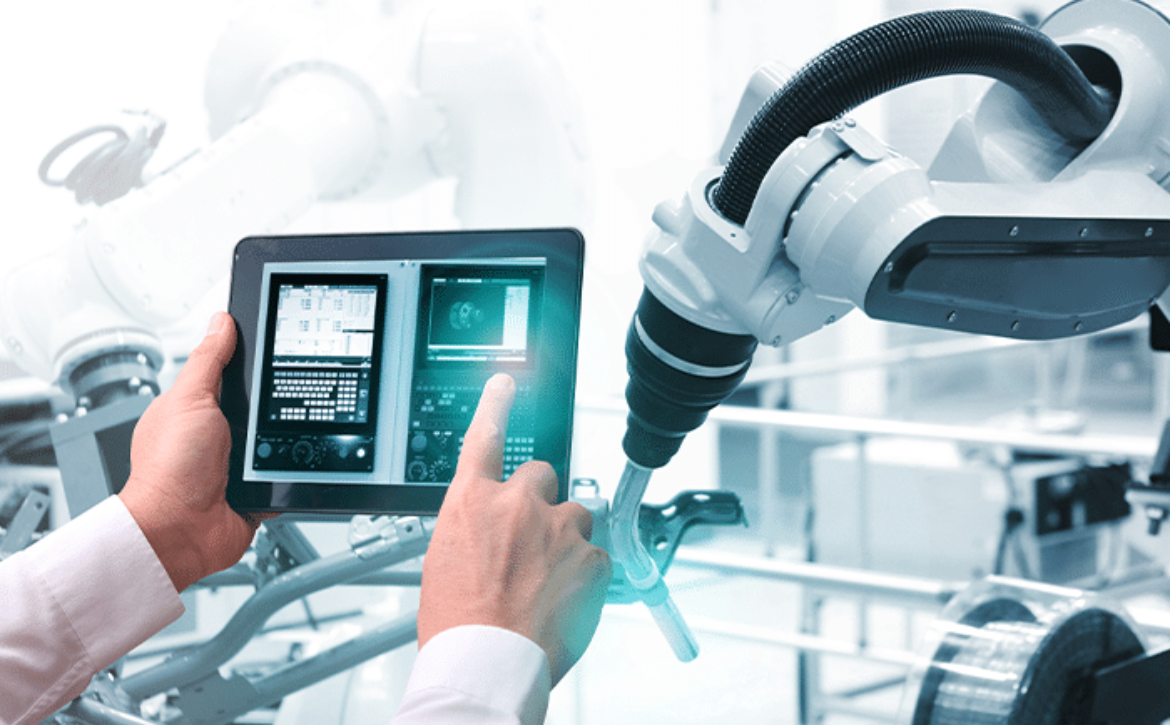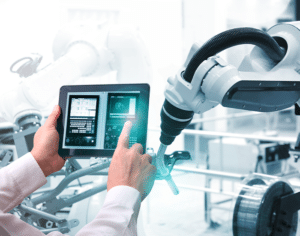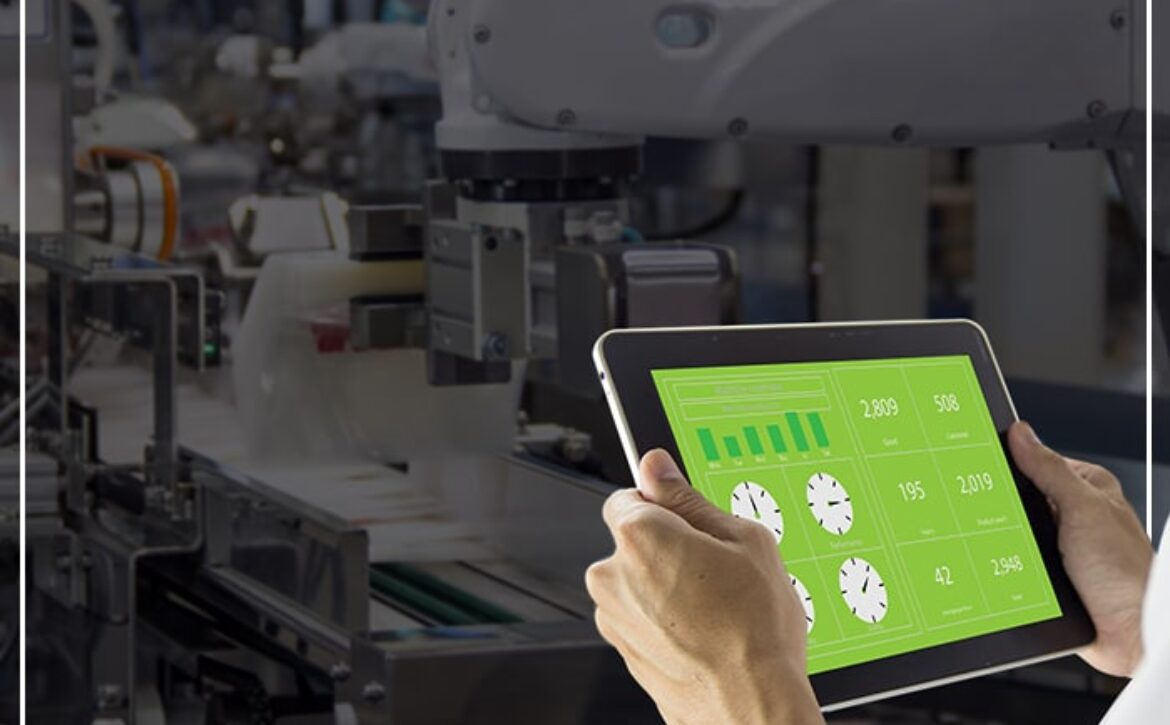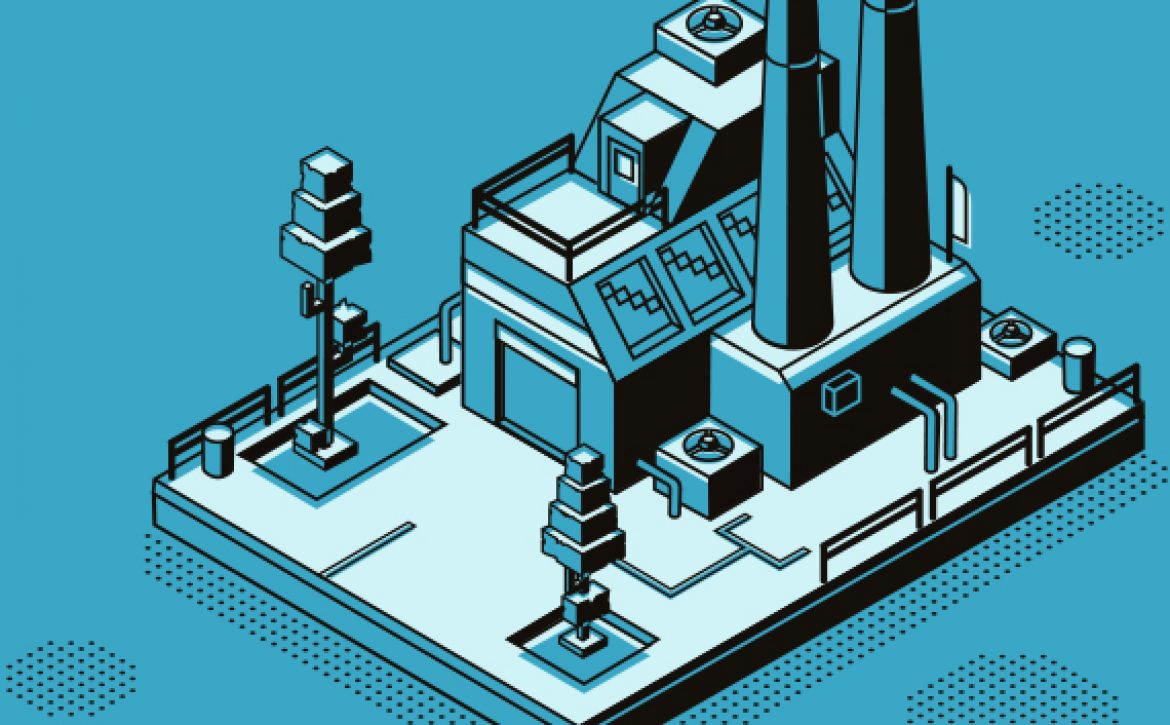RPA: Learn about the benefits and how to implement it in your organization
The rapid evolution of technology has brought to market tools such as RPA (Robotic Process Automation). Thus, the use of Artificial Intelligence and Machine Learning, for example, provided a major technological revolution in industry and other business areas.
However, when we talk about RPA we do not just deal with complex processes. Even simple tasks, such as automatic email responses, are part of the scope of this technology and that’s why it’s so important for many businesses. Through automation, companies can expand their production and reduce operating costs.
So if you want to know more about RPA and how it can contribute to your business, follow the article!
RPA: Learn more about this technology
The use of RPA is based on the concept of productivity and cost reduction through process automation. With this, it is possible to reduce or eliminate the need for human intervention, especially in repetitive tasks in which less complex systems of traditional automation are not able to act.
Through the use of software – which may or may not use Artificial Intelligence – these tasks are even performed with greater precision and speed. As a result, companies that invest in this type of technology experience added value to the business.
In addition, there is the possibility of taking advantage of the best employees in essential activities and who still depend on human labor to be carried out properly.
How does the RPA engine work?
The RPA system works through software capable of “copying” and repeating user actions. In this way, the system can integrate and interact in various activities and processes, but the implementation of this tool should focus on repetitive tasks and large volume of scale.
Because of the adaptability and flexibility of the RPA in varied situations and automatically, this technology acts as a “robot”, without intervention of people, and can be implemented in the performance of the following activities:
- customer service platforms;
- payment and collection systems;
- online order processing;
- updating of customer and employee registrations;
- curriculum management in HR;
- identification of ghost accounts and fraud;
- preparation and reporting;
- monitoring of automated tasks.
Therefore, RPA can be implemented in several business areas, be it commerce, industry or services, and in different sectors within the same company.
The benefits of RPA for your business
Among the main benefits of RPA are reducing operating costs and minimizing errors in processes. According to experts, the return on investment (ROI) can vary between 30% and 300% in the first year of use of the technology alone.
Because it is a flexible and scalable technology, the RPA system contributes to increase the levels of security and reliability, raising the level of your business.
The following are some of the benefits rpa can bring to your business:
Resource savings
With robotic process automation, operating costs are reduced, especially as the need for manpower decreases.
Improvement in corporate processes
RPA allows you to add or change processes as new needs arise, improving operation and reducing the risk of failures.
Readjustment of labor
Robotization enables the readjustment of labor resources so that they are dedicated to functions of greater value. Thus, by transferring simple tasks to an automated system, employees can focus on customer needs and solving more complex business issues.
Increased company productivity
From the RPA implementation you can do more in less time. Thus, with fewer manual processes the chance of error is lower, and productivity becomes high, including the possibility of expanding the virtual workforce quickly and easily.
More quality in the products and services provided
With standardized and consistent processes, it is possible to increase compliance and, consequently, have more quality in the products or services provided.
Improved customer service
With automation, you can make the customer journey more satisfying as the service takes place more efficiently.
Increased internal evaluation capacity
RPA records all steps and builds a history that can be used to evaluate operational indicators. Through periodic reports, it is possible to identify management problems and correct possible failures and productive bottlenecks.
Learn what’s essential to applying RPA in your business
Unlike what you might think, implementing an RPA is quite simple and fast. On most platforms, the client itself can make the basic configuration of workflows, requiring internet connectivity, login and password.
However, to start the implementation, the first step is to identify which processes will be automated, but that need a humanized nuance. After all, the great differential that this system has is the ability to resemble the human workforce.
In this sense, there are numerous tasks that can aggregate the RPA: from simply sending automatic emails to using bots with specific functions.
From this identification comes the choice of the most appropriate supplier, from a series of criteria such as:
- ease in database upload;
- workflows with high visibility;
- possibility of customization according to the needs of the business / company;
- crm use of suppliers and customers;
- facilitated internal communication;
- varied automation possibilities.
After choosing the company responsible for the software, come the implementation phase itself, followed by data management.
It is important to always choose a supplier that offers training to the professionals and teams responsible, onboarding support (face-to-face or online) and tutorials.
After the start of the operation, it is essential to determine a period in which a sufficient amount of data is produced to generate visibility and enable the evaluation of the operation of the system. This is because, over time, RPA tends to improve data analysis from algorithms.
Now that you know RPA and how it can be useful to your business, how about knowing a little more about Nalbatech solutions?
see how we can assist your company in the area of innovation.
Learn all about Preventive Maintenance in a simple way!
Preventive Maintenance. This is an increasingly sought-after solution by organizations looking to perform at the highest cost. This is because it aims to prevent equipment failures, so that the operation is continuous and it is not necessary to bear repairs and emergency changes.
Today, more than necessary, anticipating problems and keeping the company with high performance has become a fundamental issue, since the market expects agility, competition is high, customers are demanding and expenses must be controlled to minimize losses.
If you’ve come this far, it’s probably because you’re interested in getting this and other differentials brought by proactive conduct. In that case, you’ve come to the right place. Follow our article and learn all about it!
Learn more about Preventive Maintenance
According to NBR 5462,of the Brazilian Association of Technical Standards (ABNT), preventive maintenance is the set of technical and administrative actions with the objective of reducing the probability of failure or degradation of the operation of an item.
In practice, the processes take place through the planning of periodic inspections on various types of machinery and equipment,whether industrial, automotive, hydraulic, among others. Some results, in this case, are the conservation of assets, the safety of workers, customer satisfaction and the economy.
The issue of maintenance in times of Industry 4.0
Preventive maintenance is a concept that began in the 1950s, between the Period of World War II and post-war, when the sector realized the need to ensure reliability and availability of assets while maintaining productivity. Since then it has been used to restore the original conditions of the equipment, before potential failures arise.
Like countless other processes, this has undergone significant changes from industry 4.0 technologies. Today, what is expected is to perform an increasing number of maintenance activities, with increasingly optimized features.
For this, technological resources such as artificial intelligence and internet of things (IoT) are used, which help in the insertion of the future element, enabling us to have answers to situations that have not yet occurred, but would if no action were taken.
One of the concepts of Industry 4.0 is the creation of a virtual model of the machines and the entire production system, so that it is controlled and can be operated remotely. This is facilitated with the use of sensors, which send the control software the situation of each equipment. The system, which allows the detection of irregularities in real time, can be based on preventive maintenance, corrective maintenance and predictive maintenance.
Corrective maintenance x preventive maintenance x predictive maintenance: understand the differences
As we mention, industrial maintenance is composed of three methods, which are applied at different times, as well as bring different results. To make you understand each of them better, here’s what they’re all about:
- Preventive maintenance: aims to reduce failures or falls in machine performance through a pre-elaborated schedule in which periodic inspections are included;
- Predictive maintenance: actsin the routine inspection of equipment to identify abnormalities that may cause problems. This periodic monitoring is used by data collected through monitoring or inspections. The most used techniques are vibration analysis, ultrasound, visual inspection and non-destructive analysis techniques.
- Corrective maintenance: Occurs when a fault is already detected and activities occur in an unscheduled manner. As can be imagined, in this case there may be interruption in activities and unexpected costs due to the actions carried out in an emergency manner.
From what you have been able to prove, you need to have an adequate maintenance planning, which includes preventive maintenance, to avoid losses, to the same extent that you get better results.
The importance of preventive maintenance for your organization
It is possible that you have already heard the saying “the cheap that comes out expensive”. It applies well when it comes to lack of maintenance in an organization. After all, when inspections are seen as a cost and not an investment, the company ends up spending exorbitant amounts with unexpected failures.
In addition, equipment that is not reviewed periodically may have loss in performance without demonstrating, requiring a higher expenditure of electricity, for example.
When the organization invests in preventive maintenance, the scenario is just the opposite. In this case, some advantages are:
- ensures maximum use of the life of the machines;
- optimizes resources for reasons such as having more time to search suppliers, lower costs of repairs and parts changes, and minimizing overtime by unexpected stops;
- quality of the operation, since production is carried out on time and, consequently, customers are satisfied;
- prevention of accidents at work, ranging from the simplest to the most serious, capable of bringing incalculable damage.
With these factors, it is clear the importance of this type of maintenance to decrease the probability of failures. But in order to be advantageous and make sense for the company, it needs to beused strategically, based on well-structured planning and the best partnerships and tools.
To help companies perform preventive maintenance and their other subtypes efficiently, Nalbatech provides SAN Mobile, a platform that helps teams perform consultations, updates, data release and order confirmation in real time, 100% compatible with SAP® PM module.
This brings process automation securely and simply, all in user-friendly, fast and intuitive interfaces, so companies minimize errors and reduce time spent on highly transactional processes.
We hope that our article will help your organization to rely on well-structured maintenance processes. Interested in knowing Nalbatech’s solutions for process automation? So contact one of our expertsright now!
Tips to convince your manager of the importance of industrial maintenance
In the day-to-day of industrial operations, it is not uncommon for the Operations Manager or the person responsible for the shop floor to find it difficult to establish an industrial maintenance schedule. The truth is that, in many places, the topic is still considered as a minor concern.
But anyone who understands the subject knows it’s not like that.
Good industrial maintenance can be decisive for the company to comply with its strategic planning,reducing costs and boosting productivity. However, not all managers see these benefits.
Thus, to the person responsible for the shop floor, it is the task of clarifying the theme and explaining the importance of applying good industrial maintenance throughout the factory. And you encounter difficulties like these, so common in the Brazilian manufacturing environment?
In this content, we’ll share some tips that can help you direct your arguments. After all, industrial maintenance is one of the pillars of companies that seek a differential now and in the future, but what is left for you to convince your manager of this? Check out!
Maintenance as a strategic function
The production chain of a company is not something simple. It is a complex system whose function goes far beyond production simply. In fact, the shop floor plays an essential strategic role for the company as a whole, being the core of what it sells. Among other cases, the productive sector:
- Contributes to the company’s main objectives;
- It is a place that requires intense planning;
- It has a technical machinery, whose conditions influence in all production — and consequently, in the results;
- It needs the greatest possible effectiveness and effectiveness, because its operation should be continuous to the maximum.
With this, you can understand why industrial maintenance is so important. This is the planned process that guarantees this desired productive continuity.
However, you may wonder: how does maintenance influence production to the point of ensuring these results?
- Quality,as it reduces the need for rework and keeps all machinery and equipment in the best conditions.
- Agility,as it makes the production level even more optimized by reducing machine downtime.
- Flexibility,because there are different concepts that can be applied in various situations, avoiding problems from different sources.
- Savings,because it ensures the maximum operation of the machinery, enhancing its useful life and avoiding unexpected expenses.
How to have an industrial maintenance up to date
Once your manager understands the importance of industrial maintenance, you need to be aware of your practice. After all, how to keep your application up to date? It’s not just about observing the conditions of a machine and deciding whether to fix it or not.
At this point, it is necessary to consider some mandatory tasks that will facilitate your day to day. Check:
Registration and classification of assets
Your inventory needs constant updating with each move. This way, you can make a more appropriate control of what enters and leaves your shop floor, thus evaluating the daily, weekly, monthly demands, etc.
A classification system serves to hierarchize these assets into a logic of importance: the greater their relevance to the shop floor, the higher in the hierarchy. Therefore, more important to be evaluated by the inspectors.
Create different maintenance plans
The world of industrial maintenance is based on three very important concepts:
Predictive maintenance, preventive maintenance and corrective maintenance.
The three are part of the day-to-day of an optimized shop floor, in which maintenance is prioritized. After all, each concept has its peculiarity and your company must be prepared to apply them in every type of situation. Therefore, planning is essential.
Technology to assist management and make the progress of activities more flexible
Like all business processes today, it is not feasible to keep activity records and Work Orders in spreadsheets or folders, for example. In fact, it takes a system that integrates all of this so that everyone involved can access information, documentation, among others.
SAP PM®, sap’s ERP Plant Maintenance management module, is one of the most recommended.
Moreover, it is necessary to think about the flexibility of the work performed. Some industrial plants do not allow the specialist to perform maintenance without first informing the system of any exchange. Often, in fieldwork, this communication is even more limited.
Therefore, an application that enables this interaction via smartphone, even offline, is the best alternative.
Learn about industrial maintenance indicators
Now, it’s time to understand what’s working and what’s not in your industrial maintenance plan. How to accomplish this task? After all, just relying on the reports issued by your management software is not enough. It is necessary to start from a principle, but which one?
The guidelines you are looking for are named: maintenance indicators. Below are some of the main ones:
MTBF (Mean Time Between Failures) | Average Time Between Failures
This is the relationship between the total time in hours of a machine running and the number of times a failure occurred. This result gives you an average of hours between each failure, indicating your propensity for failure, which can help you plan.
MTTR (Mean Time To Repair) | Average Time for Repair
The relationship between the time (in minutes or hours) of repairs performed on a machine (the sum) and the number of times the intervention was required. The result will be the average repair time required, which will tell you how long the production will suffer from the shutdown.
Asset Availability
This indicator tells you the possibility of a machine being available for use. It follows a formula that takes into account the two indicators above:
Availability: (MTBF / (MTBF + MTTR)) x 100
The result is the percentage of availability.
Percentage of Maintenance Cost
Indicates the annual cost in relation to the company’s revenue. The formula is similar to the one above, being:
Maintenance Cost: (Total Maintenance Cost / Gross Billing) x 100
The result represents the percentage of the cost. The Brazilian average is no more than 4.
Maintenance cost per ERV
This indicator concerns the cost of maintenance per asset. In this case, ERV stands for Estimated Replace Value. The formula is known as CPMR:
CPMR: (Total spent on asset maintenance / Asset purchase value) x 100
The result will be a percentage that indicates whether it is worth keeping the asset in question. In general, it is considered 2.5 as maximum. If the result passes this, it means that the asset (machine) no longer has a good cost x benefit and can be considered an exchange.
Now that you know how to convince your manager of the importance of industrial maintenance, how to put in place a management plan and how to manage it, the time has come to put everything into practice!
For this, count on the help of Nalbatech. The company specializes in creating technological solutions such as SAN Mobile. The application is compatible with SAP PM® and assists in automating mobile processes.
Contact one of our experts right now!
MPC and maintenance planning phases: what you need to do
Planning and maintenance are two complementary concepts. The sector responsible for repairing a company’s machinery and equipment has great importance in the performance of corporate activities.
In this context, maintenance planning and control arises. This process contributes to the structuring of the company in the face of the operation of the various departments, in addition to increasing the performance and productivity of employees.
If you are interested in knowing what are the phases of MPC and how this set of strategies works, keep up with the article we have prepared for you!
What is MPC?
Maintenance planning and control, or simply MPC, has great importance in the management of the company, as it is the area focused on having control of all maintenance that needs to be done, including the sectors that require more urgent maintenance, stop scheduling and so on.
Thus, the role of the MPC is to understand the scenario of maintenance that needs to be performed, execute them at the appropriate time, besides having the control and supervision of all processes related to the subject.
The concept is related to the maintenance engineer, and the activities and functions that fall within the area also depend on the management model adopted by each company and also on the needs of the day to day.
Therefore, strategic measures are applied to schedule maintenance and solve problems in machines and operators that are essential for the productive processes of the business.
MPC: what is its importance?
Maintenance planning and control have a significant impact on the company’s performance. After all, with the efficient use of machines and operators it is possible to ensure a beneficial production, without failures or interruptions that harm the tasks.
Therefore, maintenance is a theme that needs to be carefully considered, because we know that if it is not done properly the machinery is impacted, generating bigger problems for the company.
Thus, in order to avoid negative consequences, the MPC acts directly in the planning of actions, reducing risks and improving decisions, which will also be more accurate.
What are the phases of the MPC?
To make your planning more efficient, it’s important to follow a few steps. The MPC has attributions that make all the difference in the company’s results, and it is relevant to take into account the management adopted and the specificities of the processes. Know what are the stages of planning and control of maintenance!
Preparation of schedule
The schedule is an important step to guide your decisions and better understand the flow of each activity. Understanding which actions need to be put into practice, setting deadlines that are appropriate for the team and within the expectation of the company.
Stop schedule
Scheduling a stop is an essential aspect for greater control of planning and maintenance. Inserting this process into the routine of the business contributes to the repair of machinery and at what time it is more recommended that these maintenances occur.
In addition, scheduling helps when communicating production sectors before making adjustments, informing you in which period the stops will take place. Without having this information it is difficult to maintain productivity and make decisions that impact the different processes as little as possible.
Service instructions for scheduled maintenance
Another assignment of the MPC is the provision of instructions for scheduled maintenance, that is, it is necessary to specify what material resources will be used in each repair, with a complete description of the activities that will be impacted.
With this, there is a more efficient programming and all the steps are standardized, facilitating the work.
Planning resources for scheduled maintenance
After the instructions on how maintenance will be performed, it is time to plan material resources such as parts, tools, and other items.
This planning is essential for the company to be able to organize itself financially and, in addition, have a control of what will be important for each step, avoiding problems and loss of productivity.
Monitoring and verification
After all the phases mentioned above, the processes and activities involving maintenance are monitored. The results that were observed are considered, taking into account which steps still need to be applied.
If any fault is identified it is important that the necessary measures are taken to correct it.
Instrumentation
During maintenance, several appliances are used. Therefore, they need to be measured periodically, being useful for repairs.
So make sure that all items are in good use, ensuring that maintenance is efficient.
What are the benefits of MPC?
The PCM generates several advantages for the company, and by taking the actions of the paper you guarantee positive points for management and also enhance the productivity of activities. We have separated below some of the benefits!
More productivity
Proper maintenance management affects productivity in virtually every industry, as equipment and machines where repairs are not performed can disrupt the work process or even make it difficult.
On the other hand, relying on maintenance planning and control keeps the production volume in line with expectations and contributes to a more productive work environment.
Reduced costs
Performing scheduled maintenance and within the given time limit reduces the risks of higher costs, such as investment in machinery and equipment.
Therefore, rework is reduced and employees have more significant productivity levels because there is a greater number of equipment available and in good condition for use.
Safety in production processes
Promoting safety for employees is a recurring concern in companies. The MPC is one of the guarantees to create a safe and productive environment for employees, regardless of the sector in which they operate.
Some equipment and machinery may pose serious risks to the employee’s health if they are not functioning properly. It is clear, then, the importance of investing in planned maintenance.
MPC is a set of important actions for companies, with steps that help structure maintenance management. As we highlight throughout the article, investing in this type of planning offers several benefits to the business, especially in relation to productivity and employee safety.
What did you think of the content? Contact us and find out what solutions our team has for you!
Industrial Maintenance: the before and after with San Mobile
In times of race for the optimization of internal processes, the eyes of the specialists turn to the factories. After all, where to begin this transformation? Applying concepts like Industry 4.0 gives you an idea —because it points to the path of technology. However, it is necessary a more micro look, which observes each stage of the productive routine. With a brief analysis, it is possible to identify the opportunities in the field of Industrial Maintenance — and also the doubts. So how to improve precisely this process, adapting its application with current technologies and modern requirements?
The answer is in SAN Mobile, mobile maintenance app.
In fact, the lack of solutions like this has always been a pain of companies with manufacturing plants and whose industrial maintenance was a daily necessity.
After all, year after year, what we saw was an evolution of the technological level of machinery. Increasingly, machines have become smarter and more efficient. However, they are still machines —and industrial maintenance is a necessity for all of them.
According to research by American experts, every dollar a company stops investing in industrial maintenance can cost the quadruple in the future. That is, relegating a $1,000 intervention today could cause a $4,000 loss to your pocket at some point.
Therefore, the question remains: what happened to the industrial maintenance stage? What has evolved it to the point of aligning it with current industry practices and trends?
After all, that’s necessary, everyone knows. To discover this scenario, remembering how industrial maintenance was conducted before SAN Mobile and what impacts after its application, just continue reading this article.
If your company is looking for modern solutions that revolutionize your industrial maintenance processes, surely the content will be of great benefit.
Check out!
Industrial Maintenance before SAN Mobile
Until a few years ago, what was seen in companies was a mismatch between the technological level of the manufacturing plant, which embraced innovation, and the industrial maintenance technique.
Not that the methods were outdated, but in much, the tools were.
A factory floor is an essential part of a company, full of sectors. In an automaker, there are cores for each part of an automobile beyond the assembly line. In a metalworking company, there is machining, welding, drilling, among others.
Industrial maintenance as it was before was based on a monolithic inspection method. Build a predictive maintenance routine:
The operator of a machine noticed a problem and warned the inspector, who then checked it. All the notes made on a record or something. After that, this form had to pass to the system for the appropriate Work Orders to be issued.
Of course that is not the case for all companies, but it is possible to imagine similar situations in various scenarios, right?
Now, imagine: how much time and resources were invested for this particular case? The escalation of activities impresses, even when we talk about a hypothetical case. In a complete factory plant, the scenery is even scarier.
Despite walking, industrial maintenance has always been conducted idling.
In fact, due to a bureaucracy of control that, although necessary, relied on methods and resources that inhibited it from any agility.
There were some side effects felt. In smaller companies, for example, the very role of industrial maintenance has been put into question. Not ignored, but not seen as a priority.
Not for less, to date, the loss of unscheduled stops at U.S. companies costs a lot of money: up to $50 billion annually.
Revolution: What changes in Industrial Maintenance with SAN Mobile?
SAN Mobile is precisely this step beyond what companies needed, a way to feel what Industry 4.0 is.
The solution developed by Nalbatech integrates with your SAP PM, the ERP Plant Maintenance management module.
With SAN Mobile, as the name suggests, industrial maintenance actions can be managed by mobile devices (even without an Internet connection).
On practical issues, this means that all power and agility of action focuses on the hands of your operators and maintenance specialists. Thus, they do not rely on preventative technologies or are at the mercy of time-consuming processes, such as the posting of Work Orders, for example.
Everything can be done, accessed and updated on time, speeding up the industrial maintenance process to a level never seen before.
In the industrial context, SAN Mobile means industrial maintenance that can be practiced more dynamically, in real time. The application assists in the management of all industrial maintenance within the shop floor. Among the activities it facilitates are:
- inspection;
- notifications;
- corrective maintenance;
- preventive maintenance;
- repairs (corrective maintenance).
The purpose of the application is to serve as a means for professionals in the field to perform their tasks on site, in real time.
This eliminates the occurrence of parallel controls that generate conflicting and outdated data. This reduces the amount of rework at the same time that you qualify data collection, making the analysis of this information even more reliable.
It also stands out the best access to system data — because the application is available for SAP HANA and SAP ECC. With a simple and intuitive interface, any professional can find himself in the system and access notes, installation locations, measurement documents, hours of activity, work orders, equipment and more.
Another benefit is that SAN Mobile enables customizations in an extremely agile and low cost manner at no additional cost. That is, you can transform it into an application tailored to the needs of your business, improving your industrial maintenance without development obstacles.
SAN Mobile is a step further for companies looking to get closer to Industry 4.0. Better industrial maintenance streamlines processes and makes your productive routine more effective, as well as extending the service life of your machinery.
Want to know more about the app and how it can benefit your business? Contact Nalbatech!
How to minimize errors and reduce time spent on transactional processes with SAP
Perhaps the most commonly used and most important types of processes in any organization are transactional processes. They define the main activities that a company needs to perform in order for it to succeed in its business.
Transactional tasks, although automated, are repetitive and routine, which can invariably cause errors and a lot of time spent performing the activities.
So we’ve prepared this article to show how SAP can help your business by making tasks involving transactional processes much more agile. Shall we check it out?
Transactional processes: what are they?
Transactional processes have little human interference and a large volume of integrations between different systems. Generally, these processes are repetitive and have a short life cycle, and can rotate thousands of times in a short time. We can cite electronic purchases, payment processing and automatic quotations as an example of transactional processes.
Currently, transactional processes have been the focus of systems integration tools.
What are the benefits of automating your company’s transactional processes
Automating transactional processes is essential for companies that need quick responses, especially in decision making.
As stated earlier, one of the main characteristics of transactional processes is repetitive routine. The automation of this system can bring benefits such as cost reduction, increased productivity, simplification of processes, agility in decision making, accessibility and availability of information.
How SAP assists in these processes
With the advancement of industry 4.0, the integrated automation of all transactional processes within companies has become a trend, and the implementation of SAP along these processes can optimize the flow of information, improving its quality and delivery time, a perfect scenario for managers and coordinators to focus on making more effective decisions.
The SAP platform assists in transactional processes because it sees the entire customer journey. The beginning, when the consumer contacts the company, seeking information about the desired product and requesting it, when found; medium, when payment is approved, the product is separated and packed for delivery, and close, when customer receives the product.
Among SAP modules, ERP remains the core of the company. However, this system increasingly works integrated with other solutions, whether on-premise, cloud or hybrid, and therefore needs to be more flexible to meet market demands, especially with regard to transactional processes.
In this scenario, the SAP PM Module is considered a state-of-the-art system in relation to transactional maintenance processes, as it provides resources to plan and manage all maintenance in an automated manner, making it easier to determine when and where they will happen, including those responsible as well.
SAN Mobile: an essential tool to shorten time with highly transactional processes
For your company to be able to compete in the digital age, your management solution needs to strengthen decision-making, based on reliable data from a unique source and provide the use of analytics capable of optimizing all strategic planning involving transactional processes, including maintenance.
It is a fact that, in the digital economy, real-time planning and action helps the company reinvent itself, connect not only to commercial devices and networks, but also to potential customers, offering more flexible services, with reduced errors and service time.
The SAP system is a very important tool for any company, as it integrates several business operations and improves productivity, besides helping to reduce costs and save time.
Thus, to automate the processes of maintaining your company in a simple way in a friendly platform and with intuitive design, the SAN Mobilesolution , mobile maintenance application developed by Nalbatech is ideal to reduce the time spent in transactional processes.
Through SAN Mobile, employees have a powerful feature to access and update Maintenance Orders, equipment information and installation locations, for example. All through the palm of your hand, from a mobile device.
In addition, the application automatically controls access to the functionality from the user’s access profile in SAP.
Now that you know how to minimize errors and reduce the time spent on this type of process with SAP, how about you start planning your business? Contact Nalbatech and find out how we can help you!
Industry 4.0 – What changes in maintenance?
Technology is in advance and every day the concept of industry 4.0 gains more strength in all areas of the market. The first three industrial revolutions allowed mass production, assembly lines, electricity and information technology. The fourth generates a much deeper impact, as it is characterized by a set of technologies that makes the fusion of the physical, digital and biological world. But what is the impact of industry 4.0 on maintenance? Check out the following article.
Industry 4.0: what is it?
It was at the Hanover Fair in 2011 that the term Industry 4.0 was first used. At the time, it was a way of naming the changes that occurred in industrial processes through technology and computerization. In fact, it is an industry concept that encompasses the main technological innovations in the areas of automation, control and technology applied to manufacturing processes.
In summary, Industry 4.0 means the increase of technologies in the manufacturing industry, with machines and equipment fully integrated into internet networks. With this, the management of processes becomes simpler and in real time, allowing access from any location.
However, according to information from the Brazilian Agency for Industrial Development (ABDI),about 43 of the companies still do not identify digital technologies as driving factors in the industry. This is because the high cost of implementation, the difficulty of return on investment, the structure and the new culture end up generating great challenges for the adoption of these technologies in manufacturing.
Industry principles 4.0
Industry 4.0 has features that allow you to collect and analyze machine data. With this, the processes become more agile and efficient, improving production and consequently reducing costs. However, for its implementation it is necessary to know and apply the six principles of industry 4.0 that determine intelligent production systems. Check out!
1. Interoperability
Interoperability addresses the ability of systems to connect with other systems. In summary, the contact between the employees responsible for productivity and the equipment used in the process becomes possible through the Internet of Things and a management system, such as ERP, for example. With this, you can collect data that can be used by a company value chain.
2. Modularity
With Industry 4.0 it is possible to plan manufacturing in modules, that is, with a production more focused on customization. In summary, manufacturing can be done according to the demand, coupling and uncoupling of modules in production. This brings much more flexibility to modify equipment demands very easily. With this, it is also possible to save more and improve production.
3. Decentralization
This is one of the principles of the fourth most anticipated revolution by the market, as it will be able to reduce errors and costs. Moreover, the technologies involved in the production processes of a company already adapted to Industry 4.0, allow systems to have autonomy to make decisions according to the needs of manufacturing. In this process, electronic tools know exactly what to do through machine learning-based analytics.
4. Service Guidance
This principle refers to the connection of humans and machines to perform certain tasks. This concept also aims to make the applications used available as a kind of service. The advantage is to standardize methods and processes, so that practices are followed more easily and criteria, according to planning.
5. Real-time capability
This principle is fundamental because it is about the ability to react to the events of the value chain in real time. The sum of data usage and a management system, that is, using the Internet of Things in favor of your company allows you to control and analyze in real time everything that is necessary for decision making. In addition, it makes known all the steps and development of each process.
6. Virtualization
Virtualization is a principle that allows information to be compiled. For this, it is necessary to have a team trained in dataanalysis, so that the information collected is a differential for manufacturing, also generating competitiveness in the market.
Industry 4.0 in maintenance: understand the relationship
With the arrival of Industry 4.0 in maintenance, processes have evolved. That is, the term preventive became predictive, after all, the new technologies allow to identify sources of potential failures in order to take action before they occur.
The changes that the fourth industrial revolution brought have a direct impact on the processes and the way products are manufactured. The impact of Industry 4.0 on asset maintenance is made through solutions, which enable management in production systems to become simpler. Thus, you can have a greater capacity for operation and planning.
This makes it easier to identify the causes of errors and avoid them before they even occur. Industry 4.0 in maintenance is premised to analyze performance indicators and predict the causes of equipment failures and depreciation. In this process, risk analysis techniques are widely used.
Affordable data from anywhere
The dynamics of maintenance in the fourth revolution is totally new and unites the concepts of preventive and predictive maintenance with intelligent monitoring. This is all integrated with online and real-time access to information in the production chain. Thus, the professional can access the data of any factory, regardless of where it is located, and can even be in units of different countries, for example.
This information can be important for quick and assertive decision making. Thus, it is possible that the maintenance area has an increasingly strategy applied to the processes, increasing productivity in the organization and reducing losses by stopped machines.
For example, if there is an imminent failure in the components of a machine, the professional can verify exactly which equipment is in trouble and the exact position of the occurrence. It is also possible to generate graphs through an integrated software, facilitating the study of the source of the failure and the behavior of the problem. Industry 4.0 in maintenance also allows systems to be interconnected providing greater control of processes.
Industry 4.0’s maintenance solutions
We have already realized how much Industry 4.0 impacts predictive maintenance. In fact, the industry needs to be highly effective in its processes to meet the numerous demands, that is, they need to meet strict supply schedules. Any failure can interfere with the production chain.
In this sense, technologies bring new features to improve predictive maintenance and make it more efficient, cost-effective, and more accurate. But for this, it is necessary to use different technological solutions, which allow to provide data for operational and informative support. These data are highly essential for the performance of managers and maintenance teams.
Machine Learning
Industry 4.0 in maintenance works with Machine Learning linked to artificial intelligence and brings an elementary concept to the modern industry. Applying this reality to equipment is much simpler today.
The technology and automation features allow this implementation more conveniently for professionals. With Machine Learning it is possible to program and manage large industries, organizing the demands and routines of maintenance professionals.
Big Data
We’ve talked about how important data is and how it can be used through Industry 4.0 in maintenance. In this era, they are highly important items, as they allow to control methodologies and management systems in a strategic way. Thus, Big Data becomes indispensable in predictive maintenance.
Through Big Data, information collected in relation to failures, maintenance and repairs becomes an important tool to provide an overview of equipment performance. In addition, with this data in hand it is possible to replace any equipment easily and even have a quick and accurate decision making if necessary.
IOT (Internet of Things)
The Internet of Things is increasingly present in industrial production processes and is a great ally of predictive maintenance. After all, the productive sector has been transformed with the implementation of new technologies, with sensors and data sharing. With IOT, three technology fronts are generally applied in the industry, such as sensor-driven computing, industrial analysis, and intelligent machine application.
Data that was once inaccessible, become part of the day-to-day industrial planning. With this, it is possible to create new sources of revenue and explore the capabilities of the fronts implemented with Industry 4.0 in maintenance. In addition, any failure is quickly identified and reported to the responsible teams, allowing for early action.
And you, like to know more about how Industry 4.0 is positively impacting maintenance? Also know that Nalbetech can take your company to a high level in this direction, bringing the best technological solutions. Want to know more about it? Please contact us.














